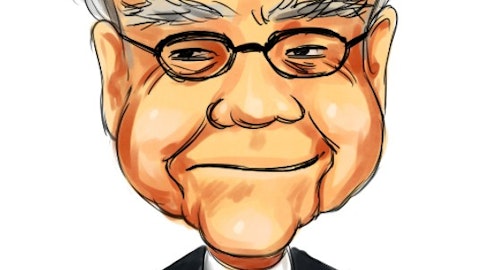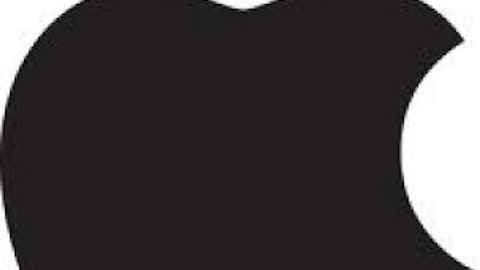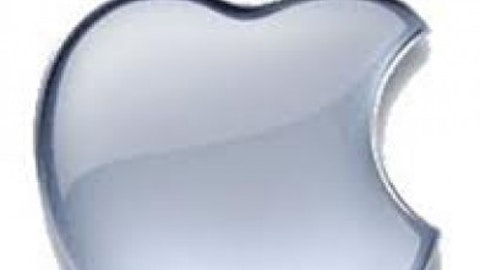Apple Inc. (NASDAQ:AAPL) has had a wild ride in 2012. After gaining over 74% on the year to touch an all-time high of $705.07, shares of the tech giant have fallen on fears of a disappointing first quarter financials, the looming fiscal cliff, a rather embarrassing Maps fiasco, and a shakeup in upper management. Now, the Cupertino bears (see “Here is Why Apple Could Fall Below $425“) will also argue that long-term worries about Apple include: (1) Tim Cook’s inability to be exactly like Steve Jobs, (2) departure from tried-and-true strategy with the iPad Mini, (3) strategic partners — such as China Mobile — unwillingness to settle for Apple-sided deals of yesteryear, and (4) a general lack of innovative products on the horizon.
As we’ve recently discussed, one of Jim Cramer’s favorite Apple analyses (see “Jim Cramer Loves This Contrarian View of Apple“) came via Darrell Etherington on the Washington Post, that poked a hole quite nicely in the majority of these fears. Most notably was Etherington’s assertion that Tim Cook should be considered to be on par with Steve Jobs in terms of innovation, the only difference being that Jobs’s successor has a bit better grasp on supply chain creativity than product design.
Interestingly, another former Apple Inc. (NASDAQ:AAPL) CEO was recently on CNBC discussing the state of the company’s shares, John Sculley. Sculley was originally made chairman of Apple in 1983, and between 1985 and 1993, he managed day-to-day operations while Steve Jobs was away at NeXT. On the current situation Apple is in, Sculley had this to say:
“I think they’re going through a very significant change now in terms of product cycles. Traditionally Apple introduces products once a year; now it’s really introducing products twice a year. The complexity of that from a supply chain is immense, and Apple seems to be doing it well. So, I think that people are underestimating just how well Apple is run, and just how successful the company can be when it gets to that twice-a-year product introduction cycle.
Sculley’s comments here seem to agree with the unheralded notion that Tim Cook is a supply chain wizard; on the subject of Apple Inc. (NASDAQ:AAPL)’s valuation, the former Cupertino CEO said that “the question is: does it still deserve a Steve Jobs premium?” to which he paraphrastically answers ‘yes,’ due to the fact that Cook has a clear product leader in Jony Ive.
When looking at the numbers ourselves, we can’t help but notice that the stock’s recent selloff may have shaved off most of that so-called ‘Steve Jobs premium,’ making now a great time to get in if you hold the same conviction as Sculley does. Between 2006 and 2010, AAPL shares traded at an average of 25.7 times trailing twelve month earnings, at a premium of 64% above the S&P. At its present price in the $586 range, however, the stock currently sports an earnings multiple of 13.3X, or a near-10% discount to the broader market averages.
There is more evidence of a lost ‘Jobs premium,’ though, whether we’re looking at book value splits (163%/123%) or cash flow value splits (74%/21%), with the latter set of splits being of supreme importance. Between 2006 and 2010, Apple’s historical cash flow valuation was 16.7X, while it’s at 10.9X this year. Over this seven year period, the size of Apple’s cash hoard has nearly sextupled and was approximately $120 billion high (see “Will Apple Pay a Special Dividend?“) at the end of last quarter.
In addition to being cheap compared to its historical valuation, shares of Apple Inc. (NASDAQ:AAPL) also look rather attractive when compared to tech peers like Google Inc (NASDAQ:GOOG), Microsoft Corporation (NASDAQ:MSFT), International Business Machines Corp. (NYSE:IBM), and Intel Corporation (NASDAQ:INTC).
For starters, shares of Apple trade at a far lower trailing P/E than Google (21.8X), and forward-looking metrics give AAPL the advantage: 10.0X to Google’s 15.0X. Sell-side analysts are expecting solid annual EPS growth (15-16%) for the search engine company through 2017, but it’s worth noting that Apple’s forecast trumps these estimates by four percentage points on average.
Apple Inc. (NASDAQ:AAPL) also has a growth advantage over Microsoft, IBM and Intel, as analysts are expecting just 9-10% yearly growth in EPS over the next half-decade for each competitor. Interestingly, PEG ratios — the metric used to determine just how investors are valuing a company’s growth prospects — indicate that Apple may be the most underappreciated mega-cap tech stock on the markets today. Apple’s current PEG is 0.68; typically any figure below 1.0 signals an undervaluation. Conversely, Google (1.39), Microsoft (1.45), IBM (1.38), and Intel (0.80) are all more expensive at the moment.
We could go on and on about Apple’s valuation — especially when factoring in its growth prospects — but we’re likely beating a dead horse, for lack of a better phrase. There aren’t too many investors who can make a case that shares of the tech giant aren’t cheap; in fact, the most bearish arguments are qualitatively-backed at best. As we discussed above, however, many of these concerns aren’t worth fretting about, and may have temporarily reduced Apple Inc. (NASDAQ:AAPL)’s ‘Steve Jobs premium’ to a particularly attractive level.






